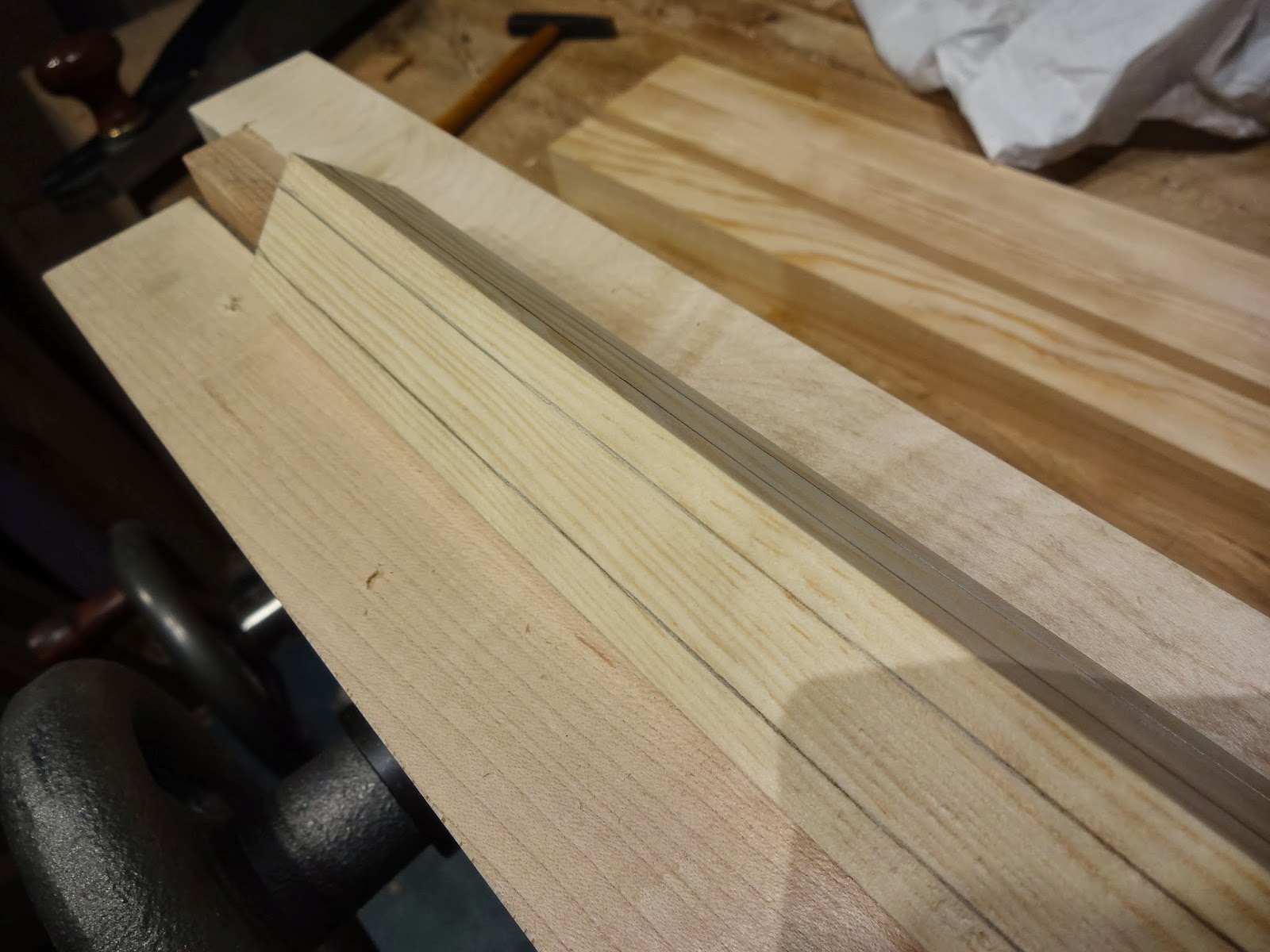Why is it that it is still under the "in-progress" heading, you ask?
The answer is, I have no idea. This is just one of those projects that is taking me forever, mostly because this project really hasn't excited me yet.
No reason, just 'cause.
We are really getting tired of using an old, borrowed, ugly, flimsy dining table in our Garmisch apartment, though. That means it is time to light the fire under this table.
I mean - light the fire under me to finish this table. Lighting an actual fire under this table would be a perfectly good waste of lumber.
Ahem.
Moving on.
Here is the state of this project at the moment:
- The top is glued up and partially flattened
- All of the legs are laminated together - I used the same 8/4 stock that was used for the top.
- The legs were flattened on a face and one edge squared up by hand before I took them to Dictum to finish the milling using their power planer.
- Stock for the aprons has been chosen.
- Make the legs look pretty.
- Smooth the table top after cutting to finish size.
- Cut the aprons to size and smooth them.
- Cut mortise and tenons.
- Glue-up the base using drawbore pegs.
- Attach the top with shop-made buttons.
- Finish.
Let's move on.
First on the list is making the legs look pretty. I made the legs by laminating two pieces of 8/4 lumber together and milling square.
I did the best I could to match color and grain up, but while a couple looked OK, the others just wound up with so obvious a glue line that there is no way these legs would look anything but "jarring."
My solution was to pull a trick I used on a quarter sawn oak arts & crafts dining table I built for my in-laws a while back: veneer used to give the appearance of quarter sawn grain on all four faces of the leg.
Here's my process: My cousin lives near a veneer factory, so I sent him over to get me about a square meter of veneer for this project. They just laughed, as usually the smallest they would sell is about a billion square meters of something. They gave him this roll of walnut veneer, probably about ten square meters, and charged him ten Euros. I think this was probably for their coffee money while they were able to get rid of some scrap or a sample or something.
What I got was a nice roll of veneer with about a dozen pieces from the same flitch.
 |
| The table legs in need along with the veneer I had to work with. |
I decided to do the ugliest leg first, one which had a nice dark piece laminated to a board that showed sapwood. What I needed to do here was find a section of the veneer that had no flatsawn grain, and which had sapwood all along one edge.
Although these sheets of veneer all came from the same part of the same log, they were not all exactly the same. The ones closer to the bark side of the tree had a little more sapwood than the others. I chose one of these and went to work.
 |
| The unrolled veneer. |
Here is a photo of everything set up. I have just poured glue on both of the legs.
 |
| Notice I'm working at the kitchen table. |
 |
| This shot shows most of the tools I used. |
I found out that the veneer can curl up when you just place it on the glue dry. No biggie, as it will be flattened down again when clamped up, but it makes it hard to tell if it is in the right place or if it shifted. To fix this I just wiped the dry side of the veneer with a damp cloth.
Once that was done, I stacked them up so the two veneer faces faced each other, separated by some termite poop and wax paper.
 |
| The whole glue up. |
 |
| Here is a shot of this table leg in it's eventual intended location. How ironic! |
Here is the result:
 |
| fresh out of the clamps |
So far, so good. We'll have to wait until the finish goes on to really be sure everything matches, but to my eye right now it appears to be a perfect match.
Two more table legs to veneer up in this way and I'll be ready to move on with this project. Another two years and maybe the table will be done!












































